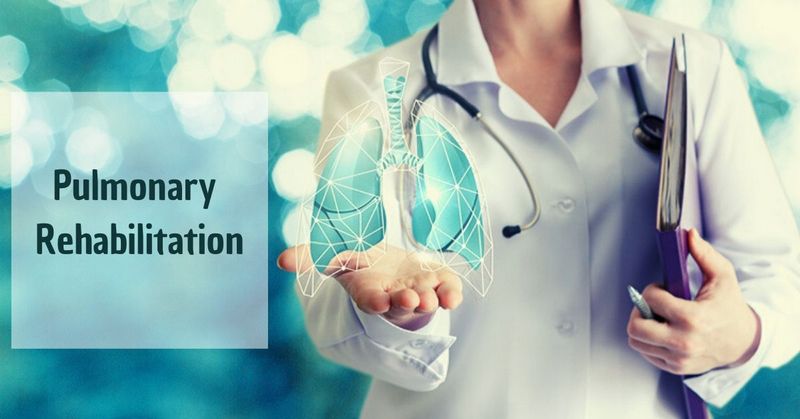Pulmonary Rehabilitation
Pulmonary rehabilitation is the use of exercises, training and behavioral psychotherapy to improve the functionality and quality of life of patients with chronic respiratory diseases.

For many patients with chronic diseases of the respiratory system, drug therapy only partially alleviates the symptoms and complications of the disease. A comprehensive pulmonary rehabilitation program can lead to significant clinical improvement due to:
- Reduced shortness of breath;
- Increased exercise tolerance;
- Reduced number of hospitalizations.
However, these programs do not increase survival.
Indications
In the past, pulmonary rehabilitation has been used for patients with severe chronic obstructive pulmonary disease (COPD). However, an increasing number of data indicate the benefits of using it in patients with interstitial lung disease (ILD), cystic fibrosis (CF), bronchiectasis, asthma, and lung cancer. For patients undergoing lung transplantation, as well as surgery to reduce lung volume, pulmonary rehabilitation was also beneficial, both before and after surgery.
Studies in patients with COPD have shown that pulmonary rehabilitation must be started before COPD becomes severe (as determined by the degree of airflow restriction) since there seems to be a poor correlation between the severity of the disease and physical activity. In addition, even patients with a less severe form of the disease are likely to benefit from reduced dyspnea, increased exercise tolerance, improved muscle strength, ventilation, improved heart and lungs, reduced dynamic hyperinflation and psychosocial benefits resulting from pulmonary rehabilitation.
Contraindications
Contraindications are relative and include concomitant diseases (for example, untreated angina pectoris, left ventricular dysfunction), which can complicate attempts to increase the level of physical activity in a patient. However, these concomitant diseases do not exclude the use of other components of pulmonary rehabilitation.
Complications
There are no complications after pulmonary rehabilitation, with the exception of those that can occur after physical exertion and exercise.
Methodology
Pulmonary rehabilitation is best done as part of a comprehensive program that includes the following:
- Physical fitness;
- Training;
- Psychosocial and behavioral interventions.
Pulmonary rehabilitation in Brooklyn, NYC, is carried out by a team of doctors, nurses, pulmonologists and therapists, psychologists or social workers. This intervention should be individualized and focused on the needs of the patient. Pulmonary rehabilitation can be started at any stage of the disease in order to minimize the severity of the disease and symptoms.
- Exercise training includes aerobic exercise, breathing muscle training and strength training of the upper and lower extremities. Over time, more and more evidence appears confirming the benefits of both strength and interval limb training;
- Inspiratory muscle training (IMT) is an important component of pulmonary rehabilitation. IMT strengthens the respiratory muscles with devices that impose a resistive load, which is set at the maximum pressure of a person’s inspiration. When used alone, IMT can reduce shortness of breath, but it is unclear whether it can improve exercise tolerance and the effectiveness of daily activities. However, the use of IMT in addition to traditional pulmonary rehabilitation exercises leads to a clinically significant reduction in shortness of breath during daily activity and an increase in walking distance;
- Neuromuscular electrical stimulation (NMES) uses a device that directs transdermal electrical impulses to selected muscles to stimulate contraction and thereby strengthen them. NMES can be effective in patients with severe lung diseases, as it minimizes the need for circulation and does not cause shortness of breath, which often limits these patients from participating in a typical workout. Thus, neuromuscular electrical stimulation is particularly suitable for patients with a significant reduction in ventilation or for patients with an acute attack of respiratory failure;
- Education has many components. Counseling about smoking cessation is important. It is useful to learn special breathing techniques (for example, exhaling through closed lips when exhalation begins with the mouth closed to reduce the respiratory rate, thereby reducing gas absorption), as well as the principles of maintaining physical energy. An explanation of the treatment is needed, including the proper use of drugs and palliative care planning, if necessary;
- Psychosocial therapy involves counseling and feedback in the presence of symptoms of depression, anxiety and causeless fear, which may interfere with the patient’s full physical activity. Behavioral change strategies and an emphasis on self-care are essential components of pulmonary rehabilitation. Strategies include setting goals and solving problems, making decisions, adhering to treatment, and maintaining daily exercise and physical activity.
Although the most optimal maintenance strategy is unknown, continued participation in the exercise program is important to maintain the benefits of pulmonary rehabilitation.